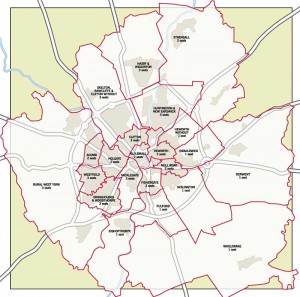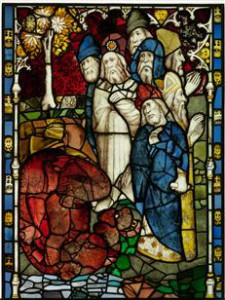The Council has announced how the £120,000 taken from the local Ward Committee schemes budget is to be used. (more…)
Behind doors decision making reaches new depths in York
The arrogance of the York Council Leadership clearly knows no boundaries. The number of decisions taken over the last couple of weeks in meetings from which the media and public were excluded is beginning to creep out.
The decisions appear for a few hours on this web site http://tinyurl.com/York-Council-new-decisions before being consigned to archive levels.
Opposition Councillors have only a very short time (hours) to “call in” the decisions to ensure a public debate.
However, in a new twist to the sorry saga, the reports produced by Council officers to inform the proposed decisions are – at least in the case of Transport budgets (see below) – being withheld from public view?
This makes for the casual observer understanding what decision has actually been taken virtually impossible.
Incredibly no attempt has been made to justify the withholding of these reports as is required by the Local Government Act.
Several of the decisions concern the use of £10,000’s of taxpayer’s money.
There is no evidence of any prior consultation with Councillors or members of the public on any of these decisions.
The secret meetings included:
1. Transport/Planning 7th August 2012: “Purpose of the report: Inclusion of carry over budgets from 2011/12 into 2012/13 capital programme, and amendments to scheme allocations where required to reflect latest cost estimates and scheme progress. The Cabinet Member is asked to: Note the outturn figures for the 2011/12 capital programme, approve the carry over schemes and funding, and increase the current budget for the 2012/13”
2. Leisure 8th August 2012: “Purpose of report: To approve the Service Level Agreement funding for Accessible Arts. The Cabinet Member is asked to approve the Service Level Agreement between the Council and Accessible Arts for 2012-15″. The decision involved approval of annual payments of around £10,000 a year.
3. Leisure 8th August 2012: “Purpose of report: To approve the Service Level Agreement funding for the National Centre for Early Music. The Cabinet Member is asked to approve the Service Level Agreement between the Council and the National Centre for Early Music 2012-15”.
In the past York residents have been able to depend on the local media to highlight what they saw as any potential abuse of power at the Guildhall. Whether they have the resources, or will, to address this emerging issue remains to be seen.
What is certain is that claims that the Council would try to be more “transparent” in future have been exposed as a rather poor joke.
York ward boundary review
Details of a proposed review of the number of Councillors and the boundaries of individual wards can be found on the Boundary Commissions web site. See http://www.lgbce.org.uk/all-reviews/yorkshire-and-humberside/north-yorkshire/city-of-york-fer
Initially they are asking for comments on the preferred number of members that the Council should have. They emphasize that the ratio of Councillors to electors must be equal across all wards. At present there are major disparities (Smallest: Fulford, Largest: Heslington)
You can view a copy of the current ward boundaries here: http://www.york.gov.uk/content/images/main/Ward_map
A case can be made for retaining 47 Councillors at the review date (2016) because of the growth in population that will take place in the interim.
This would produce a ratio of 1 Councillor per 3500 electors (about 2000 homes).
Although some residents may feel that this produces too large a Council, experience suggests that an assiduous Councillor would be able to regularly consult with and keep 2000 households informed. It would be wrong to conclude that because there are some lazy representatives who do very little consultation between elections, the solution to the problem is to have fewer Councillors. The democratic answer is to kick out the deadwood and elect hard working representatives.
An initial representation on the total size of the Council must be made to the Boundary Commission before 3rd September.
Of more significance may be issues that will follow on.
1. The number of wards: If there are 47 Councillors then why not have single member wards? That way every elector would know who his or her representative was. Each would represent an area about the size of Foxwood. Accountability would be improved. The wards would have to be broadly of similar size. The shape would be influenced by the existence of natural boundaries such as rivers and railway lines as well as historic parish council areas.
2. The frequency of elections: There is a strong argument for a return to annual elections with 25% of the Council retiring each year. This would promote consistency in decision making. The Council would be more sensitive to the wishes of residents. The ruling party would know that, if they made mistakes, then electors would be able to give their verdict every May.
These are choices that need to be made over the next few weeks.
The democratic system in York needs a good shake up.
The boundary review provides a rare opportunity to modernise local electoral systems.
HALFWAY THROUGH THE YORK MINSTER APOCALYPSE
Conservators working on the restoration of the Great East Window at York Minster have completed the conservation of half of the panels in the stunning medieval window depicting the story of the Apocalypse.
York Minster’s Great East Window contains the largest expanse of medieval stained glass in Britain, and was designed by one of the stained glass master John Thornton of Coventry. Started in 1405 and completed in 1408, the main part of the window depicts the Apocalypse, and is recognised around the world as being some of the finest medieval stained glass still in existence. The restoration of half of the Apocalypse panels is now complete thanks to the tireless work of the York Glaziers Trust.
“This is a significant landmark in the restoration project, as each of the 108 panels require painstaking research, documentation, examination, conservation and repair of the many thousands of components that make up this incredible glass masterpiece,” says Sarah Brown, Director of York Glaziers Trust. “Each panel is a work of art in its own right, each piece painted with the skills of a Van Eyck or a Vermeer, with an amazing delicacy that can now be fully appreciated as we look at the panels up close.” (more…)


